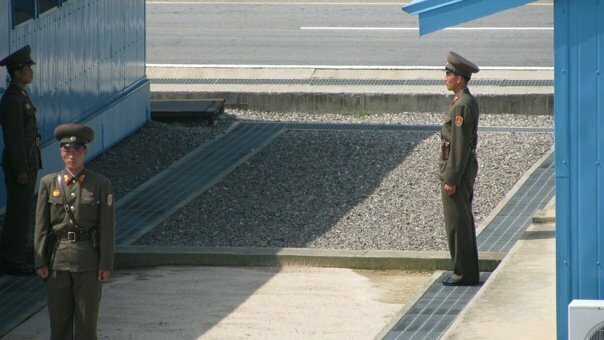The Korean War of 1950-1953 cemented the division of the Korean people and left thousands of families separated. The times before and during the conflict saw the continuous movement of refugees up and down the peninsula, following the ebb and flow of war and famine on the land. After 1953 the border between North and South Korea became less permeable and the movement of people across the 38th parallel ground to a virtual halt. The years following the Korean War witnessed the occasional defection, most often for political reasons and usually so-called ‘high-value’ defections. These included several high-ranking military personal and Hwang Jang-yop – the creator of North Korea’s Juche philosophy– who defected in 1997.
From the mid-90s, following periods of extensive famine, flooding and economic mismanagement on behalf of the North Korean government, the number of North Koreans leaving their homes and crossing the border into China grew exponentially. Over the last ten years the number of North Korean refugees arriving in South Korea has ballooned, thanks largely to the effects of chain migration and the development of improved networks from South Korea, through China and into North Korea. Currently, the number of North Korean refugees in South Korea is estimated at a little under 25,000.
The Korean War of 1950-1953 cemented the division of the Korean people and left thousands of families separated. The times before and during the conflict saw the continuous movement of refugees up and down the peninsula, following the ebb and flow of war and famine on the land. After 1953 the border between North and South Korea became less permeable and the movement of people across the 38th parallel ground to a virtual halt. The years following the Korean War witnessed the occasional defection, most often for political reasons and usually so-called ‘high-value’ defections. These included several high-ranking military personal and Hwang Jang-yop – the creator of North Korea’s Juche philosophy– who defected in 1997.
From the mid-90s, following periods of extensive famine, flooding and economic mismanagement on behalf of the North Korean government, the number of North Koreans leaving their homes and crossing the border into China grew exponentially. Over the last ten years the number of North Korean refugees arriving in South Korea has ballooned, thanks largely to the effects of chain migration and the development of improved networks from South Korea, through China and into North Korea. Currently, the number of North Korean refugees in South Korea is estimated at a little under 25,000.
Become a member for less than $4 per week.
Unlimited access to all of NK News: reporting, investigations, analysis
The NK News Daily Update, an email newsletter to keep you in the loop
Searchable archive of all content, photo galleries, special columns
Contact NK News reporters with tips or requests for reporting
Get unlimited access to all NK News content, including original reporting, investigations, and analyses by our team of DPRK experts.
Subscribe now
All major cards accepted. No commitments – you can cancel any time.
